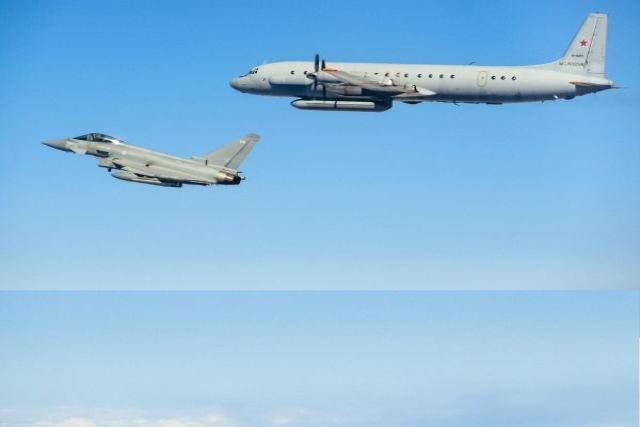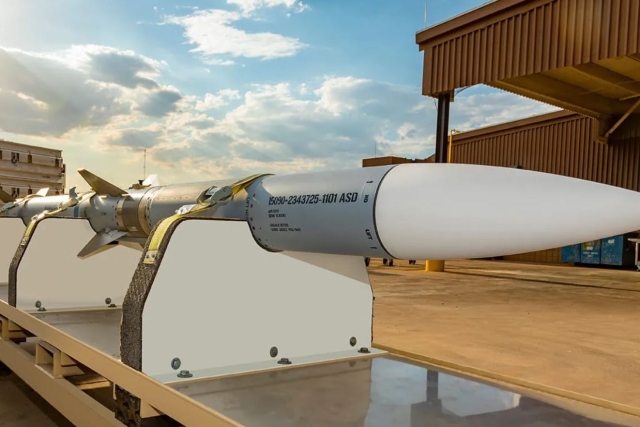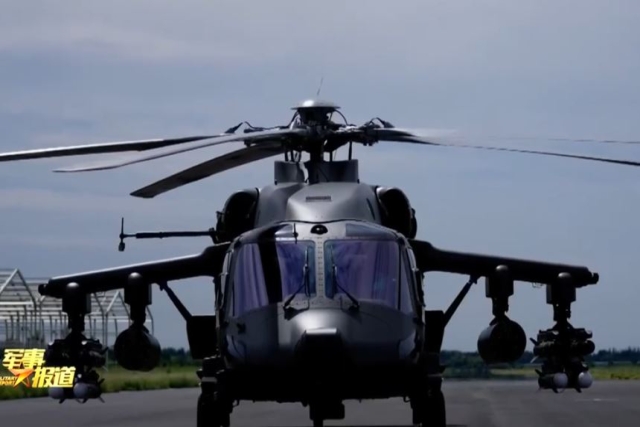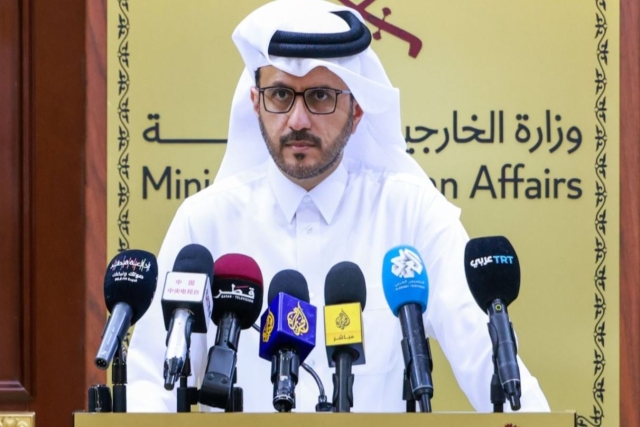Free Flow of Weapons Make Peace Difficult in Libya
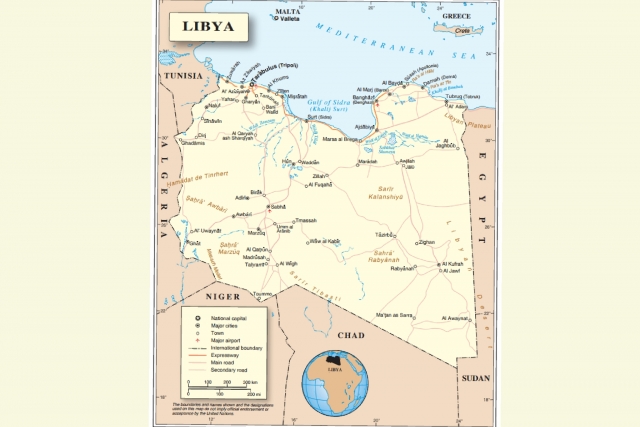
Map of Libya (via UNSC)
An almost in-exhaustible flow of weapons to the two main fighting sides in the Libyan conflict has made peace a fragile commodity in Libya.
The liberal flow of heavy and expensive weapons- tanks, armored vehicles, drones, helicopters, electronic warfare equipment- despite a United Nations embargo show the high stakes game that is ongoing in Libya and why no one wants to give up.
It also shows the utter powerlessness of the UN to impose its embargo or use its influence to stop the fighting
In what looks like a tactical retreat for the Libyan National Army (LNA), one of its sponsors- Egyptian President Fattah el-Sisi attempted to broker a peace between UN-recognized Government of National Accord (GNA) and the LNA led by renegade commander Khalifa Haftar.
The “Cairo Declaration” proposed on June 6 calls for a ceasefire agreement, plus the formation of a presidential council that represents all the regions and parts of Libyan society. It also obliges the foreign parties to remove mercenaries from Libyan territory, dismantle the militias and hand over their weapons. In the absence of GNA representatives, the conference ended a damp squib.
Soon after, Cairo started moving Abrams Tanks to ‘enforce’ its ceasefire. According to reports, 18 M1A2 Abrams Main Battle tanks belonging to the Egyptian army are being moved towards the border with Libya in what like an attempt to boost the declining fortunes of the LNA.
Cairo has previously sent Mi-8 helicopters and eight MiG-21 jets to Libya, says a United Nations Security Council (UNSC) report earlier this year.
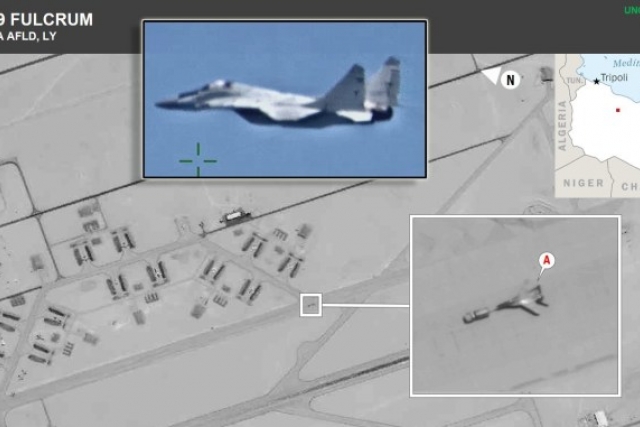
The Libyan government was established in 2015 under a UN-led political deal following ouster of late ruler Muammar Gaddafi. Ever since then, the Libyan government has been under attack by forces loyal to warlord Khalifa Haftar. While the GNA enjoys support from Turkey and Qatar, LNA is backed by Egypt, United Arab Emirates (UAE), Russia and Saudi Arabia.
By mid-2020, the Haftar Army lost almost all of the territory it had gained since the beginning of its Tripoli offensive earlier in the year. GNA has recaptured al-Watiya base and Tripoli International Airport from LNA’s grip. A spokesman said the forces are now trying to liberate Sirte, a city east of Tripoli, which Haftar's forces took over in January.
Haftar’s fortunes took a beating three months ago when Turkey joined the Libya party. Several military equipment including UAE-supplied Pantsir air defense systems, Chinese-built Wing Loong drones used by Haftar militia have been destroyed by the Turkish army using Bayraktar TB2 drones and superior tactics. As of January, the UAE and Turkey had reportedly conducted upwards of 850 and 250 drone strikes, respectively.
The United States has accused Russia of deploying Wagner Group mercenaries (based out of Russia) equipped with light artillery, a charge Moscow denies. The mercenaries could well be acting on their own lured by $2500 a month pay which the LNA reportedly offers.
Turkey too, has sent in mercenaries to fight on the side of the GNA. But these are army regulars sent to advise GNA troops and the militias supporting them, various reports say. Besides, Turkey is dominating the air thanks to its F-16 fighters, drones and electronic warfare assets.
Who Supplies What?
|
COUNTRY |
EQUIPMENT |
|
Jordan |
Mbombe 6X6 and Mared 8X8 Infantry fighting vehicles Nashshab RPG-32 Variant Anti-Tank rocket launcher Training |
|
Turkey |
Bayraktar TB2 Kirpi 4X4 MRAPs Mercenaries |
|
Egypt |
M1A2 Abrams main battle tanks |
|
United Arab Emirates |
Wing Loong II, Orlan-10, Mohadjer-2, Yabhon drones Pantsir S1 air defense systems Ilyushin Il-76TD BA-7 missiles |
|
Russia |
MiG-29 Su-24 Wagner Group mercenaries |
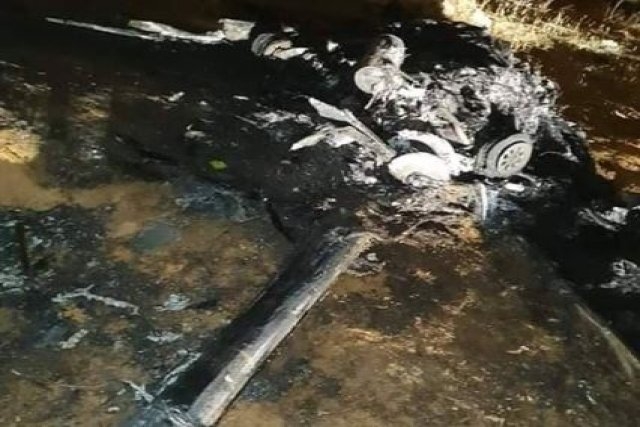
UNSC has confirmed reports of UAE supplying LNA (Haftar’s Armed forces (HAF) with Wing Loong II UCAVs while the allegations of supplying Orlan-10, Mohadjer-2 and Yabhon HMD UAVs are yet to be fully ascertained. Multiple Ilyushin IL-76TD aircraft are also observed to have supplied to LNA by UAE and Kazakhstan, of which two have been confirmed destroyed on ground at Jufra air base on July 25, 2019 while others perform transport roles. UAE is also found to have supplied LNA with a myriad of air defense systems in the terms of MIM-23 HAWK, Pantsir S-1 which are stationed to provide strategic airbases and the Blue Arrow (BA-7) surface-to-air Missiles which is paired along with the Wing Loong II UCAV. Offshore Patrol Vessel (OPV) Al Karama also has been provided to LNA by Universal SATCOM services, whose CEO, Reema Sami Abdullah Al Omari is held in non-compliance due to her personal involvement in the transfer.
LNA has also been aided by Jordan with the former’s soldiers obtaining military training in Jordan. Even as Jordan hasn’t responded to the UNSC’s Panel enquiry, photographic evidences containing the name of the training school has been obtained. LNA has also been noticed to be in possession of Mbombe 6X6 and Mared 8X8 Infantry fighting vehicles and Nashshab RPG-32 Variant Anti-Tank rocket launcher whose manufacturing is exclusive to Jordan.
In the other corner, the GNA-AF have been provided with Kirpi 4X4 MRAPs and Bayraktar TB2 combat drones by Turkey in 2019. GNA’s other ally, Qatar, reportedly supplied US-made Barrett M82A1 (standardized by the US military as M107) .50 caliber sniper rifles, military experts say, citing images and video footage circulating on Twitter.
The vehicles supplied to the Libyan government in 2012 i.e, Cobra and Cougar LAMVs and Spartan LAVs manufactured by UAE are now in use by both parties to the conflict.
Destruction of Equipment and Human Casualties
On May 14, GNA claimed to have destroyed four aircraft, a helicopter, two drones, a vast number of tanks, artillery, armored vehicles, heavy weapons as well as facilities used by militias loyal to putschist Khalifa Haftar in a week. Unconfirmed reports put the figure of Pantsir systems being blown up by the GNA at around ten.
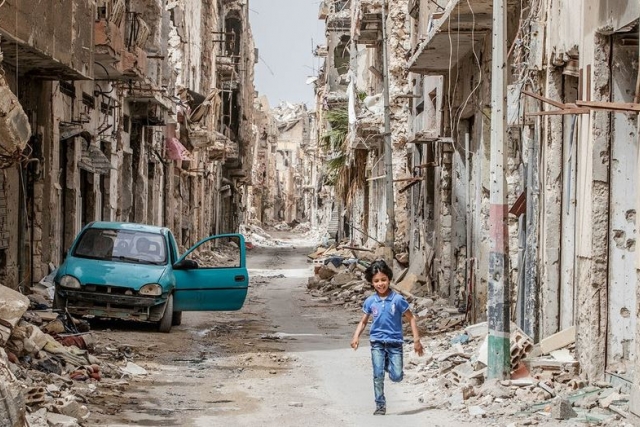
Haftar militia reportedly destroyed two Bayraktar TB2 drones, and its own Chinese Wing Loong by accident.
More than 140,000 people are being displaced since the Civil War broke out. Reported civilian casualties have also surged over the years. According to Airwars, at least 429 of the estimated minimum of 727 civilian deaths in Libya since 2012 are believed to have taken place since the offensive began. The report assigned responsibility of 270 deaths to Haftar group and affiliated forces, and 95 to GNA.
Why are neighboring countries fighting over Libya?
Turkey, and to a lesser extent Qatar and Italy, support the UN-backed GNA. Turkish President Recep Tayyip Erdogan has flown its own advisory troops and some 2,000 mercenary fighters into Libya from the Syrian conflict, according to reports. Turkey’s support, analysts say, is tied to Ankara’s desire for access to Eastern Mediterranean gas drilling.
Oil output from Africa’s Libya is pegged at 1.3 million barrels per day (bpd). Haftar militia blocked main oil export terminals in January, after which oil production took a nosedive to less than 300,000 bpd.
Meanwhile the UAE, Egypt, France and more recently Russia, back Haftar. The UAE and Egypt oppose the GNA — which they see as a hotbed of Islamism and Muslim Brotherhood affiliates, something that’s anathema to their own governments. In case of Russia, the move is viewed as a continuation of Moscow’s expansion and leverage over diplomatic channels in the Middle East and Africa.

